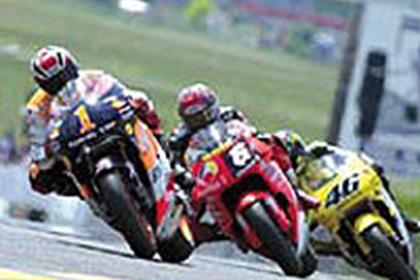Why everyone is mad for Screamers
HONDA’S new GP 500 rider Loris Capirossi said in last week’s MCN he opted for a Screamer engine because it was easier on tyres.
Traditionally, it’s the Big Bang engine Mick Doohan started using in 1992 which was thought to give rubber its best chance of survival.
Doohan opted for it on his NSR500 because it cut wheelspin to give smooth drive out of the corner.
With a Big Bang engine the cylinders all fire within, typically, 70 degrees of turn. There are then 290 degrees until the pattern repeats. And in that time the rear tyre gets a chance to recover and grip. The Screamer engine it was up against spread its firing order more evenly, effectively reducing the amount of time the rear tyre got to rest, resulting in more wheelspin. And, back then, that was a bad thing.
But in less than 10 years, the wheel has turned full circle. Following the lead set by Doohan and then Alex Criville, Capirossi has chosen the Screamer. His reason is that it cuts wheelspin.
So what has changed to create this apparent paradox? One factor is the change from leaded to unleaded fuel. This has dulled throttle response and tamed power outputs, so riders are seeking ways of regaining snappish responses. Another is steady progress in engine management electronics, which, hand-in-hand with general tuning development, has improved throttle control.
Then there’s the rider’s own feeling. Doohan explained his switch from Big Bang to Screamer in terms of the engine’s more direct response. ” It gives a better connection between the throttle and the back tyre, ” he said.
The greatest change, according to GP technical guru Warren Willing, has come from the tyres. The current generation of GP tyres actually perform better and last longer when they do spin.
The Big Bang motor is more destructive because the greater grip it allows puts more stress on the tyre than when it is spinning and sliding. Willing, who moved from Team Roberts to Team Suzuki last year with Kenny Roberts, saw his rider lose his championship chance when a rear tyre shed a chunk at Phillip Island. The reason was too little wheelspin, not too much.
” The advantage of the Big Bang engine was to cut wheelspin when highside accidents were a problem, ” he explained.
” As the rear tyre loads up, the contact area increases. Then when it started to spin the contact patch would suddenly decrease. ”
The sudden change would cause the bike to snap sideways and frequent crashes were the result. The Big Bang addressed that by reducing the tendency to wheelspin. The other consequence, of greater stress on the tyre, was an acceptable price to pay at the time. Since then, advances in tyre construction have improved the internal damping, reducing the speed of the transition from grip to wheelspin, cutting the tyre’s tendency to spring back, explained Willing.
” Wheelspin actually saves a tyre because of the reduced traction. You don’t destroy a current tyre with wheelspin, but by the forces of static traction. When the tyre spins, it heats the surface of the tyre, bringing oil to the surface which saves the tyre. Static traction, when the wheel is not spinning, drives the heat deeper into the tyre, which is more destructive. ”
What Capirossi is talking about is not less wheelspin, but better wheelspin.


